This is one of the current builds I’m working on at the moment. I must be on a Revell kick right now. Anyway, I hope you all enjoy.
Steve
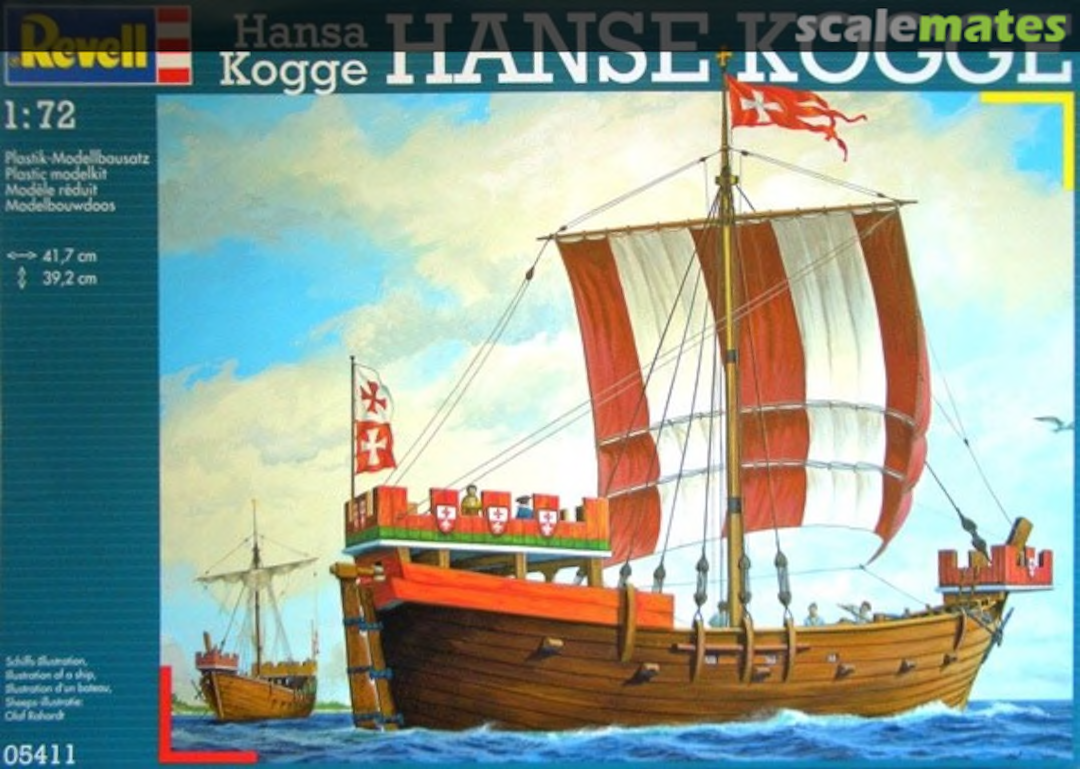
This is one of the current builds I’m working on at the moment. I must be on a Revell kick right now. Anyway, I hope you all enjoy.
Steve

All my photos went away when I moved them into another folder in Photobucket… interesting.
Steve
*** Nota Bella***
I’ve since deleted all my photos from PhotoBucket. I’m replacing the pictures.
Enjoy
This is the 1/72 scale Revell Hanse Kogge that came out a couple of years ago. I got it second hand and decided to try my hand at artist’s oils to achieve a wood effect I saw cruising the European sailing ship forums.
The first pictures show the initial painting with Tamiya and Model Master spray paints. After letting these dry for 3 to 4 days, I started in with the oils straight from the tube. I rather like the effect. As you can see from this set of pictures I inserted a brass rod in the mast to give it some strength for rigging later on.
Steve

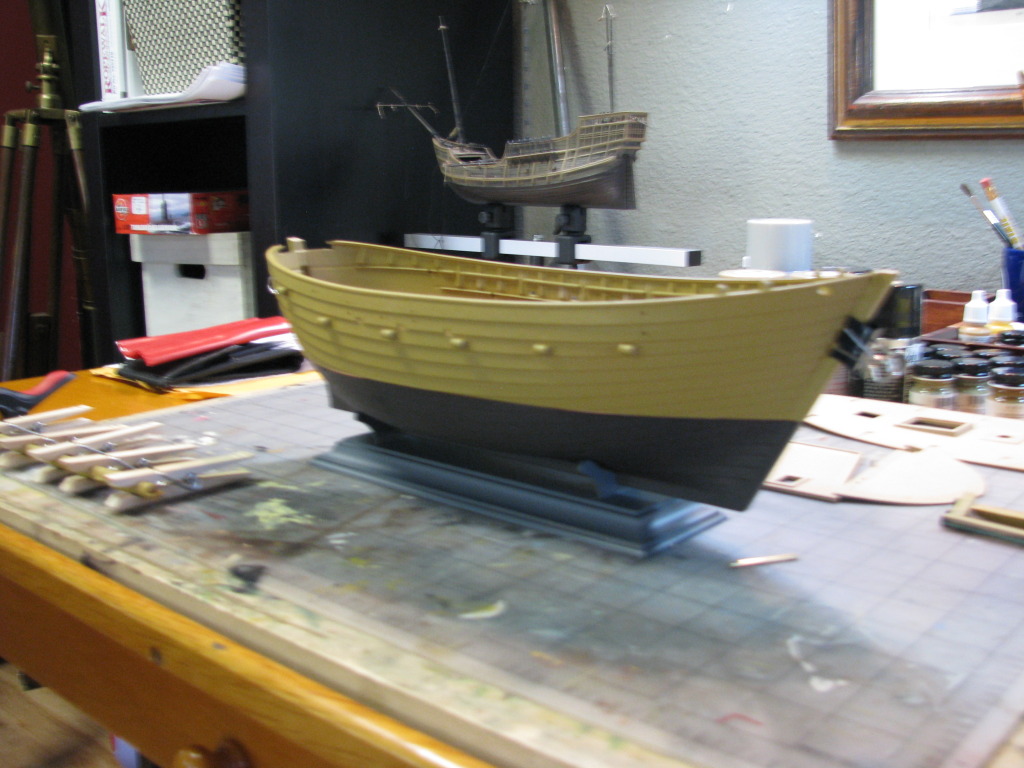
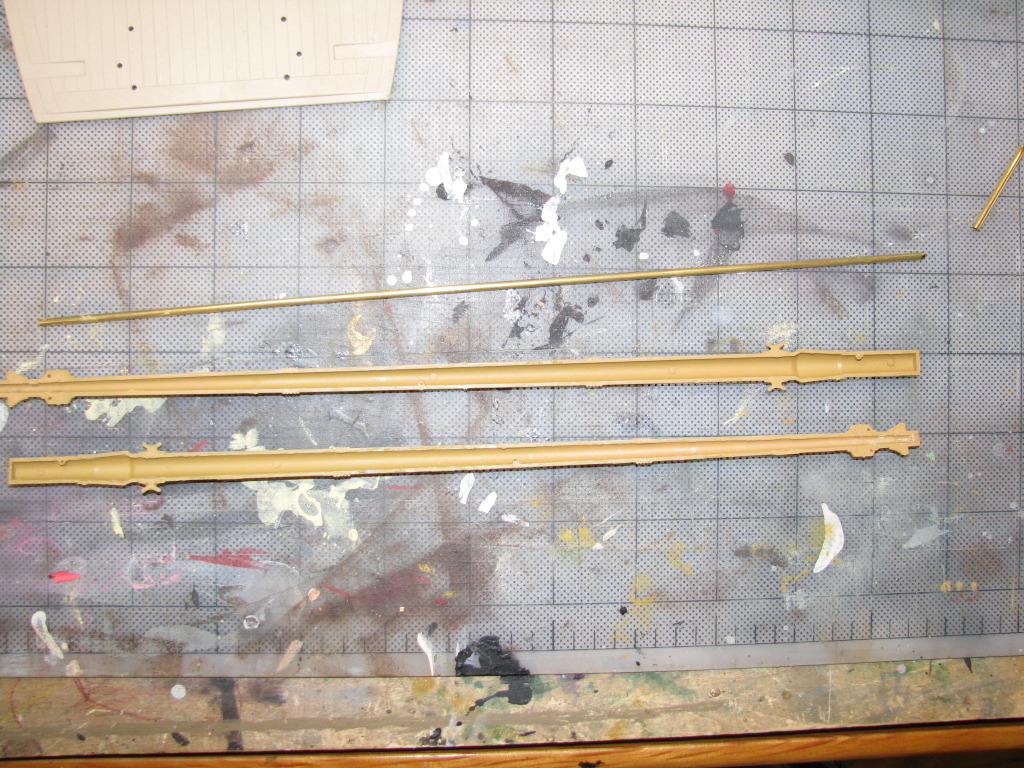
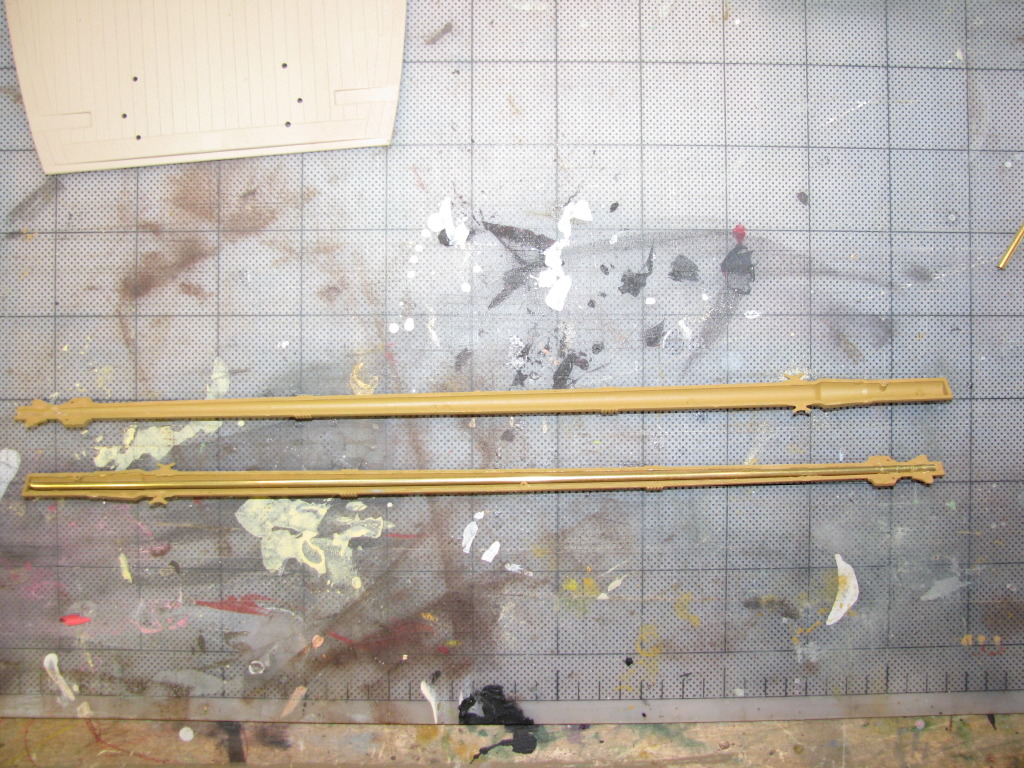
Starting the gluing and a bit of oils to test.
Steve


After deciding what colors I was going to work with, I started in . One of the nice things about oils is that they are more forgiving than enamels or acrylics in that you can wipe the oils off with mineral spirits if you don’t like the job. On the down side, it takes about a week or more for them to dry.
Steve


The inside of the hull and the false lower deck painted. Working on the deck and outside hull.
Steve
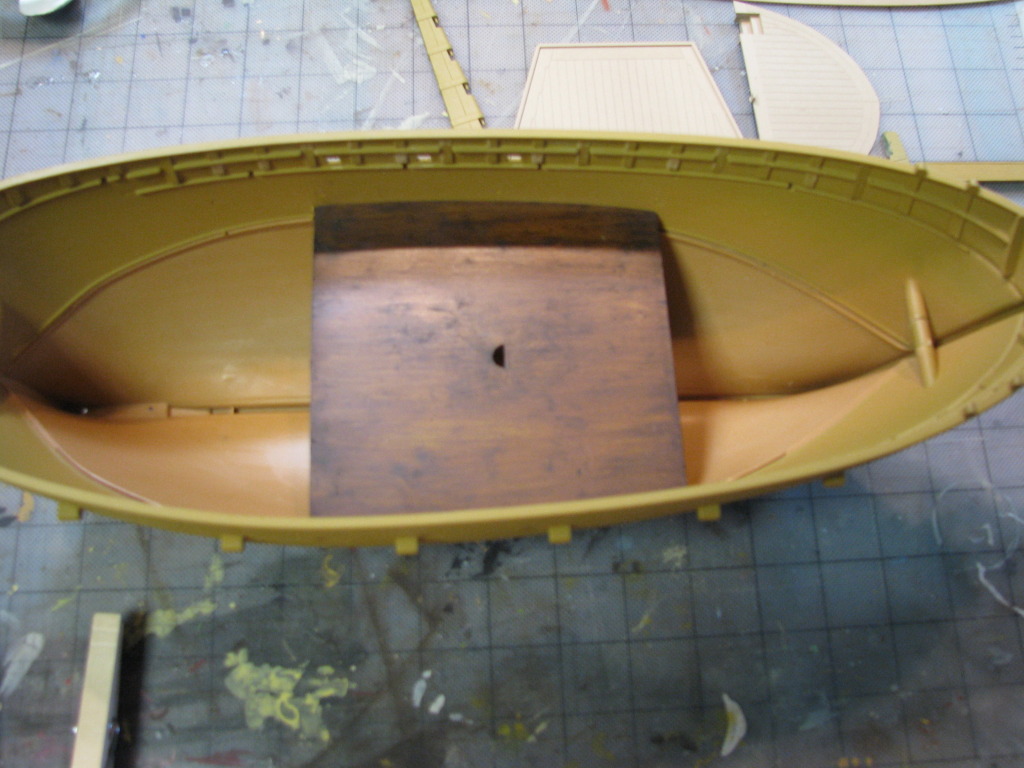
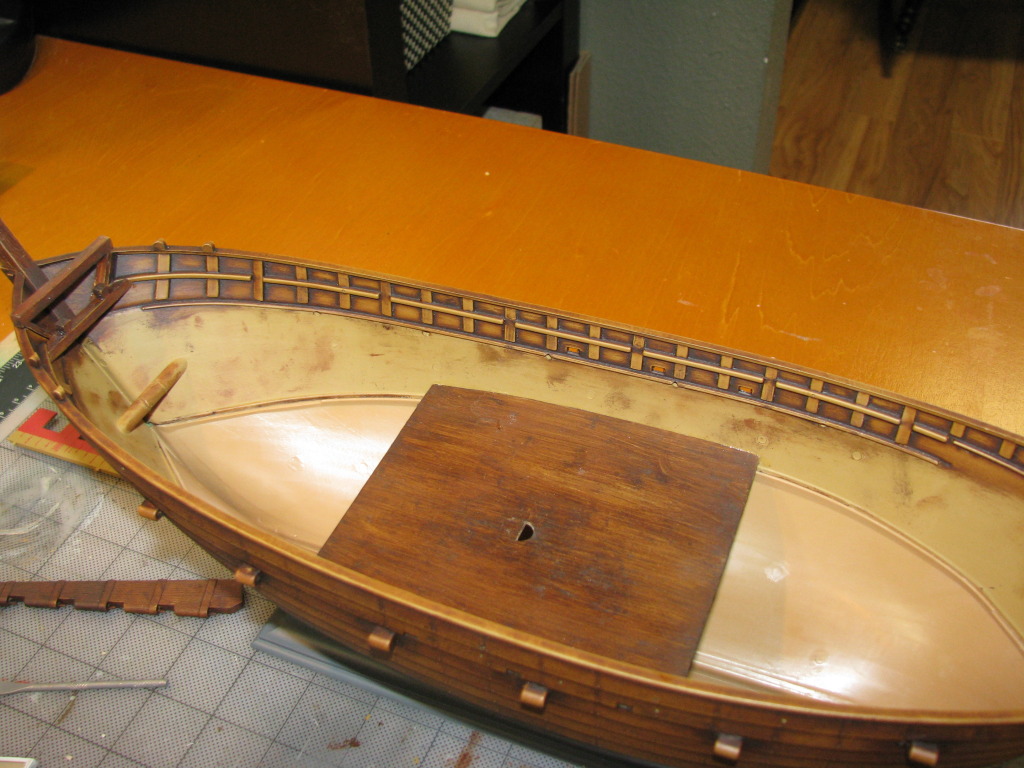

The Colours look great. Very nice indeed. Will watch this one with interest…Cheers Mark
Thanks Mark I appreciate the support.
Steve
Working on getting the hull just right.


Beautiful work. Well done!
That is some seriously nice-looking ‘wood’ work. Very effective.
Docidle, you show excellent judgment as well as fine modeling skills. I’ve been preaching for some years that this kit would be a great one for people just getting into sailing ship modeling. It’s historically important, it’s a fine, well-detailed kit, and it offers practice on just about every facet of sailing ship modeling in simplified (but accurate) form: one mast, some rigging with quite a bit of variety too it but not much repetition, and wonderful opportunities for applying painting skills.
I believe the kit originated with the Russian firm Zvezda, which has proven its skill in designing sailing ship kits elsewhere. (It’s been reissued in several different boxes, but I have the impression that the only things that vary are the decals for the sail.) My only complaints are the injection-molded sail, which I just couldn’t live with (but which could be left off, with the yard replaced by a wood one), and the high price. But one of these days I may just tackle it.
It’s drawn some criticism in some quarters because the deck planks run from bow to stern. The surviving cogs (I believe there are a couple of them in Germany - including one that, as part of the conservation regimen, has been submerged in a tank of fresh water for several years) have deck planks that run athwartships. But so many of the things were built, and so little documentation about them is available, that to my mind it seems entirely possible that some were planked fore-and-aft.
I think the original manufacturer had it in mind that the kit could be used in wargames. Zvezda makes a huge range of soft-plastic 1/72 figures - including several boxes of medieval ones. There’s a potential there for a well-populated ship - and yet more opportunity to show off one’s painting technique.
I once saw an article about a huge, radio-controlled U.S.S. Missouri that contained, among many other amazing features, a small tape player that played the soundtrack from “Victory at Sea.” That gave me another idea: a cog containing a cd player blasting forth Wagner’s “Tristan und Isolde.” (The first act takes place on board a ship, which, I think, might well have been a cog.) Hey, if Richard Rodgers can do it, why not Wagner?
Very, very impressive, Docidle!!! Seriously, I may have to bug you for some painting pointers! Artists oils seems like the key, but how do you apply them? Different consistencies, like washing? And what colors are you using? I think my next plastic ship will be painted with a technique similar to yours…Love it!
And good idea using the rod in your mast!
The build looks great so far!
BTW, I’m noticing that dramatic-looking hull+masts you have partially done in the background…what ship is that? Some kind of Galleon??
Thanks Tom!
Thanks Greg, hopefully I won’t have anything go wrong…
Steve
Thanks for the kudos John, I just hope I can finish this off right. I was going to replace the plastic but rather accurate blocks in the kit for wooden ones and replace the yard with a wooden dowel since even the furled sail is a bit too much. I’m also a bare pole guy although if I was going to do a diorama with the waterline option, I would possibly use the sail or make mine.
I also have the HMS Thomas version with the sail decorated with Edward III coat of arms that would need to be shown.
I really like the Wagner suggestion! Maybe do something with motion detection to start the music…
Anyway, thanks again for the kudos and suggestions,
Steve
Touching up the hull and decks. Fitting them together and checking for gaps.
Steve

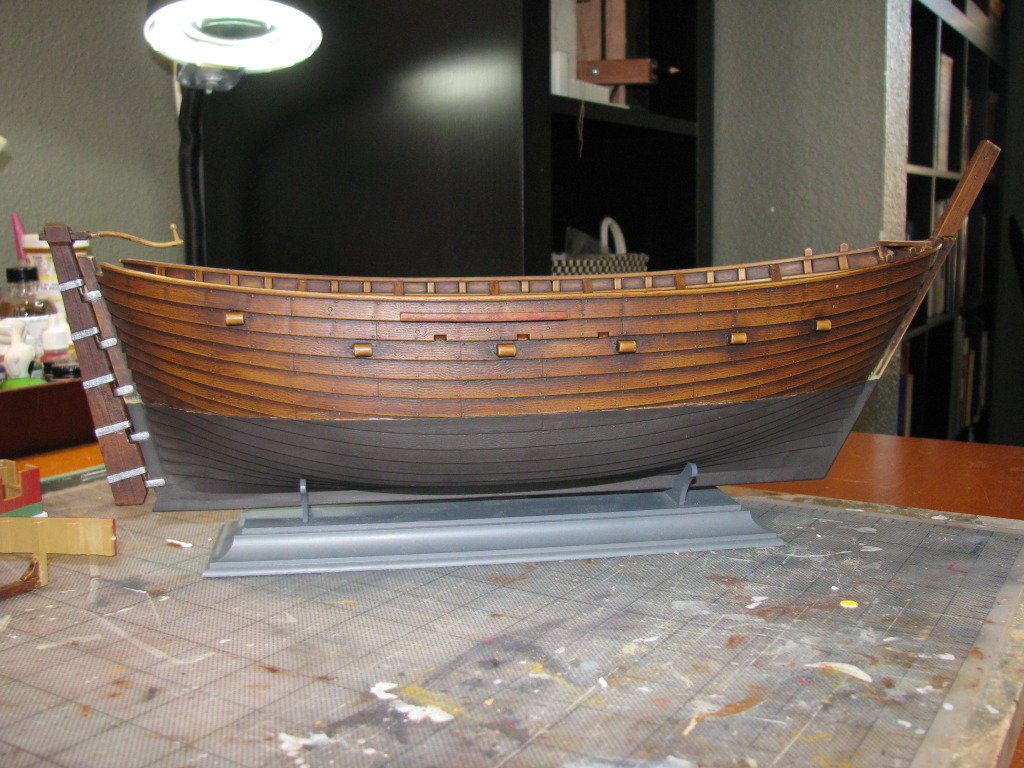


Thanks Dave I really appreciate it and well done for finishing the Black Swan!
Artist oils don’t work on everything, however, that being said, I have not tried everything yet. On this build I’m using Windsor and Newton Burnt Umber, Raw Umber, Burnt Sienna, Raw Sienna, Yellow Ochre and Vandyke Brown. It also matters what your base coat is as this affects the upper coat colors. The best way is using acrylics then the oils since using enamels and oils would ruin the enamels and make a really big mess!
I would be more than happy to field any questions on painting and colors as this is really what forums are for; the exchange of ideas and techniques. And to show off are models of course.
I think I learned the metal rod in Les Wilkins’ book or maybe somewhere else but it is a really good idea when you have hollow masts. This rates up there with metal eyebolts for rigging as the tension is amazing for lines.
Thanks again,
Steve
Also Dave, the model on the keel klamper is the Revell Santa Maria. Of course with certain modifications and I will probably scrap this and start in with another one pretty soon, but then again, maybe not, as I’m waiting for my Imai/Ertl Santa Maria which is a whole lot bigger. I also have a number of other models I really need to get to.
Steve
